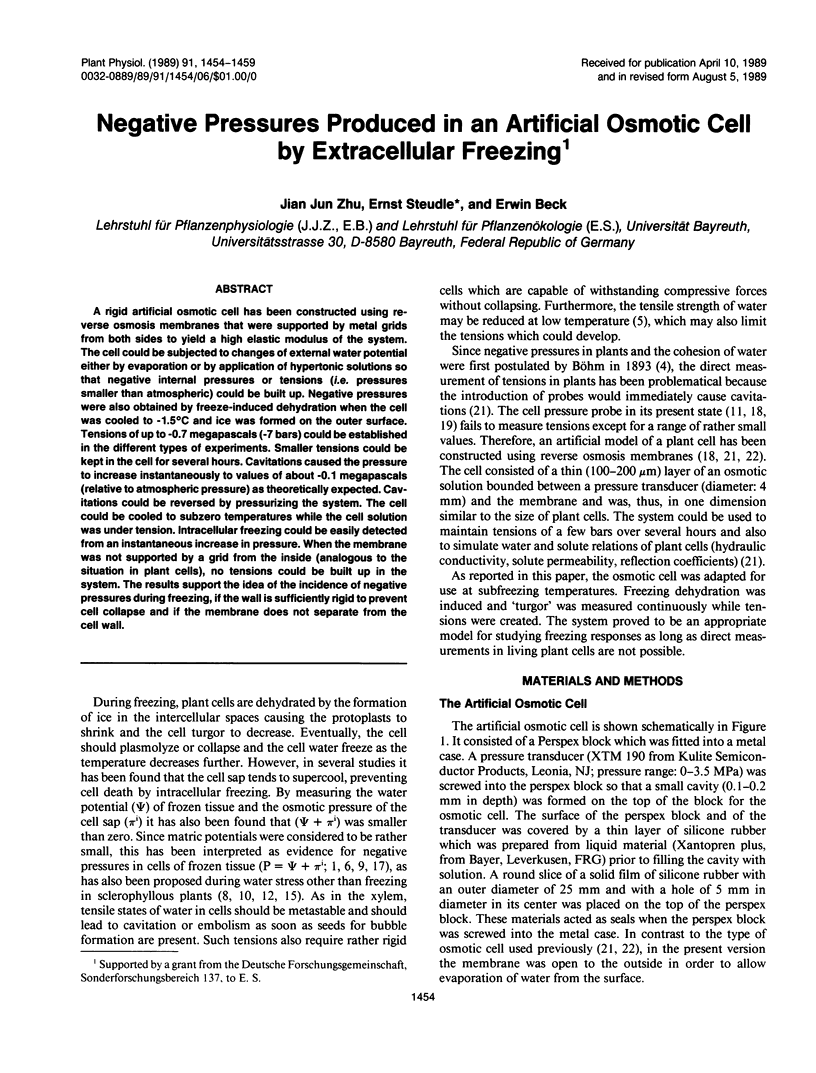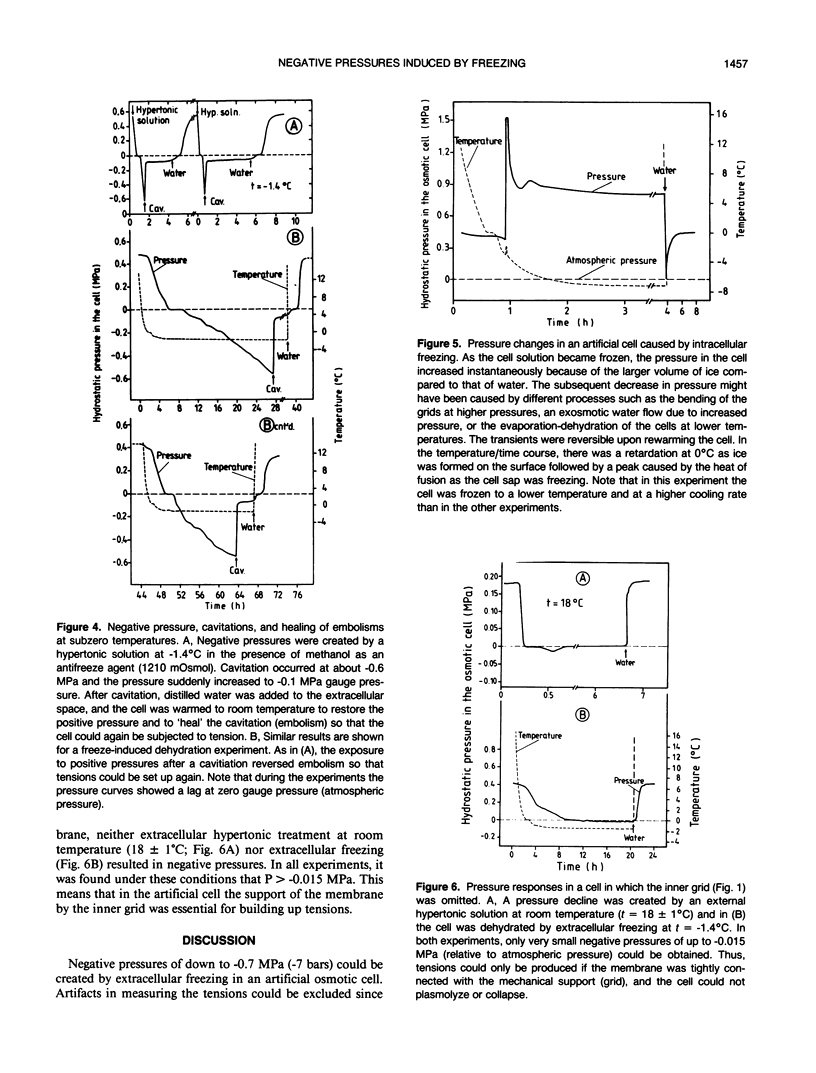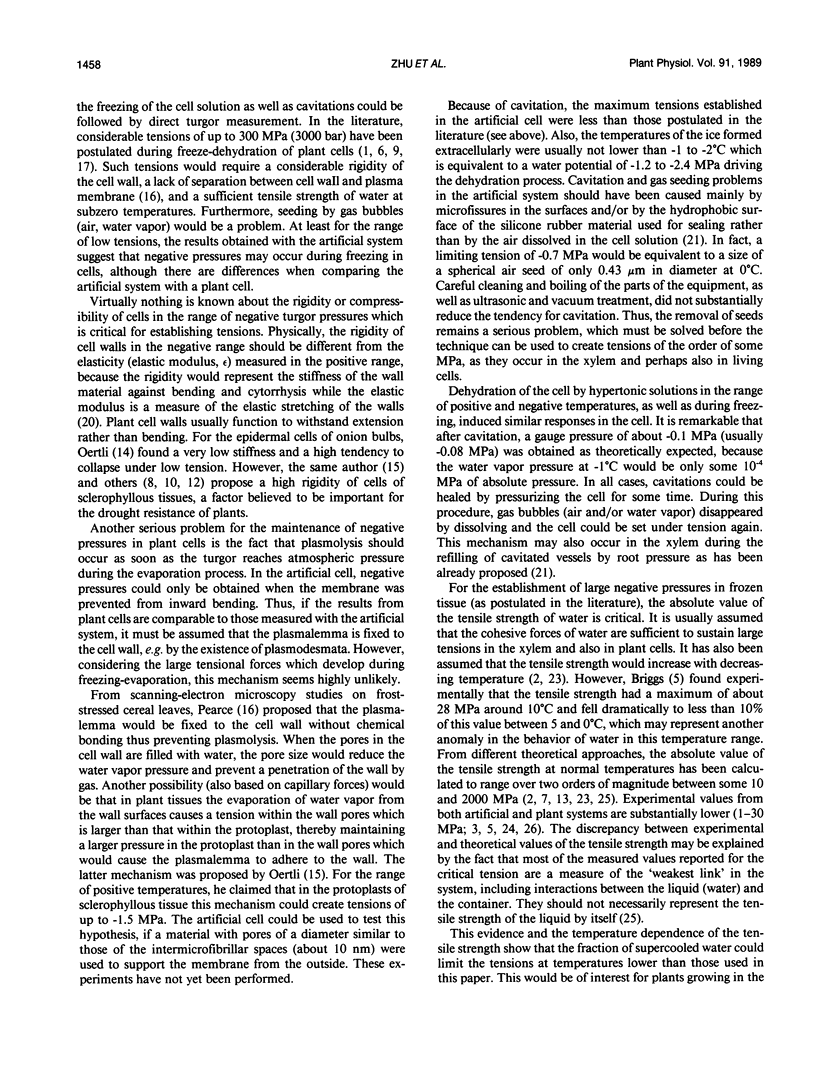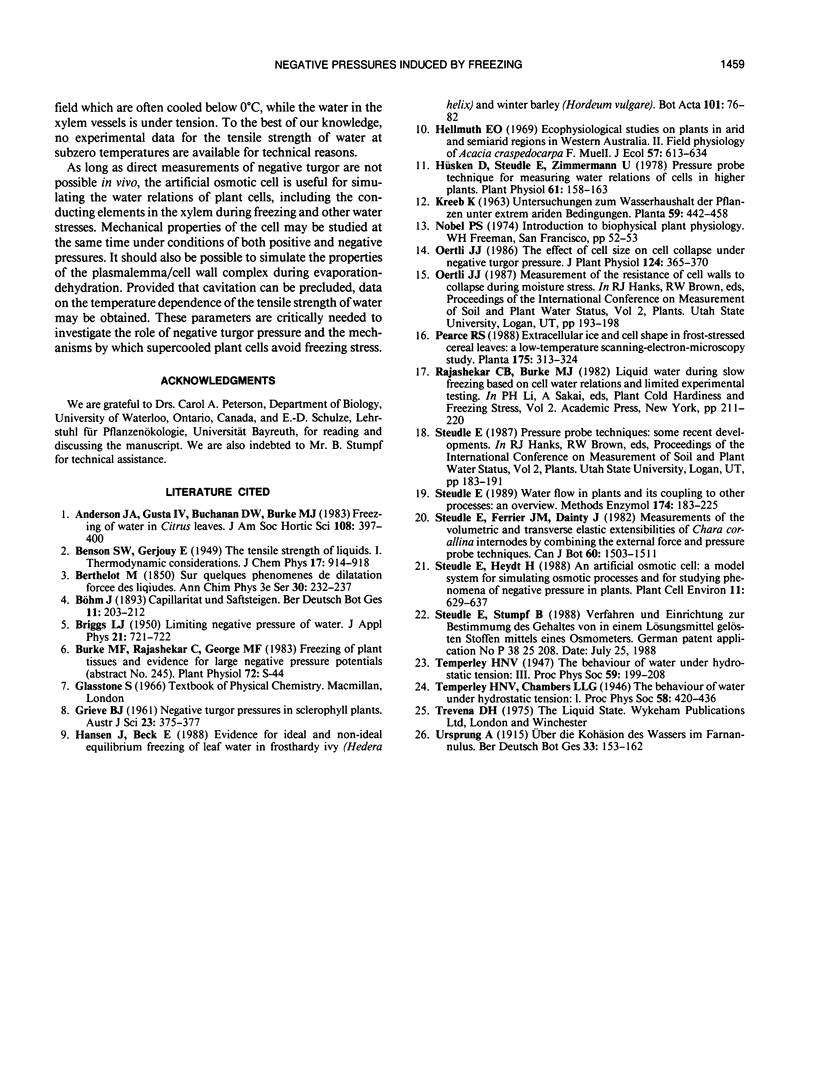Abstract
A rigid artificial osmotic cell has been constructed using reverse osmosis membranes that were supported by metal grids from both sides to yield a high elastic modulus of the system. The cell could be subjected to changes of external water potential either by evaporation or by application of hypertonic solutions so that negative internal pressures or tensions (i.e. pressures smaller than atmospheric) could be built up. Negative pressures were also obtained by freeze-induced dehydration when the cell was cooled to −1.5°C and ice was formed on the outer surface. Tensions of up to −0.7 megapascals (−7 bars) could be established in the different types of experiments. Smaller tensions could be kept in the cell for several hours. Cavitations caused the pressure to increase instantaneously to values of about −0.1 megapascals (relative to atmospheric pressure) as theoretically expected. Cavitations could be reversed by pressurizing the system. The cell could be cooled to subzero temperatures while the cell solution was under tension. Intracellular freezing could be easily detected from an instantaneous increase in pressure. When the membrane was not supported by a grid from the inside (analogous to the situation in plant cells), no tensions could be built up in the system. The results support the idea of the incidence of negative pressures during freezing, if the wall is sufficiently rigid to prevent cell collapse and if the membrane does not separate from the cell wall.
Full text
PDF





Selected References
These references are in PubMed. This may not be the complete list of references from this article.
- Hüsken D., Steudle E., Zimmermann U. Pressure probe technique for measuring water relations of cells in higher plants. Plant Physiol. 1978 Feb;61(2):158–163. doi: 10.1104/pp.61.2.158. [DOI] [PMC free article] [PubMed] [Google Scholar]


